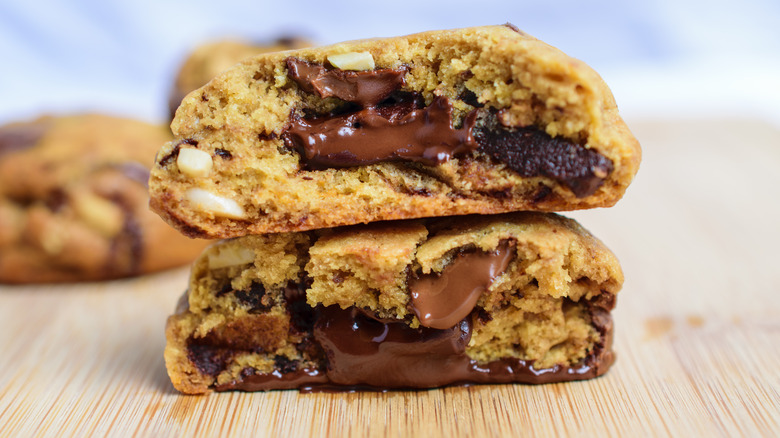How Long Should You Keep Your Cookies Cooling On The Sheet?
Cookies are a precise art. Even a single extra minute, percentage of fat in the butter, or degrees can totally alter the texture and taste of the cookie. Whether you're going for the perfectly gooey fudge brownie cookie or a crumbly shortbread biscuit recipe, every step in the process matters. And that includes what happens when you take the cookies out of the oven, too.
Even after you've removed your cookie sheet from the oven, your cookies are actually still cooking. This requires a little special calculation on your part to prevent the cookies from being under or over-baked. One important tool that helps you to better predict and control how your cookies will finish off is a cooling rack, says Bake or Break. By removing the cookies from the still-hot cookie tray, you lessen the effects after-baking. But still, how long should you wait to transfer the cookies over to the rack, and long until you move them to a plate (or directly into a glass of milk)?
Cooling time depends on your desired texture
When it comes to baking King Arthur Baking offers a few hard and fast rules to follow when it comes to the best cooling rack technique for your drop cookies. Drop cookies are simply cookies made by transferring balls of cookie dough from the mixing bowl directly on the cookie sheet, per Betty Crocker, unlike sugar cookies which are cut from the rolled-out dough. For proper cooling to achieve a chewy texture, the advice from King Arthur is to initially leave the cookies on the baking tray for 5 minutes after taking them out of the oven. This gives them a chance to firm up before being transferred, preventing a total cookie crumble.
After 5 minutes, King Arthur instructs you to leave the cookies on the cooling rack until they've cooled completely if you plan to transfer them to a covered container, whether that's a food storage container or on a plate with plastic wrap. Otherwise, the cookies might steam up and lose their desired texture.

